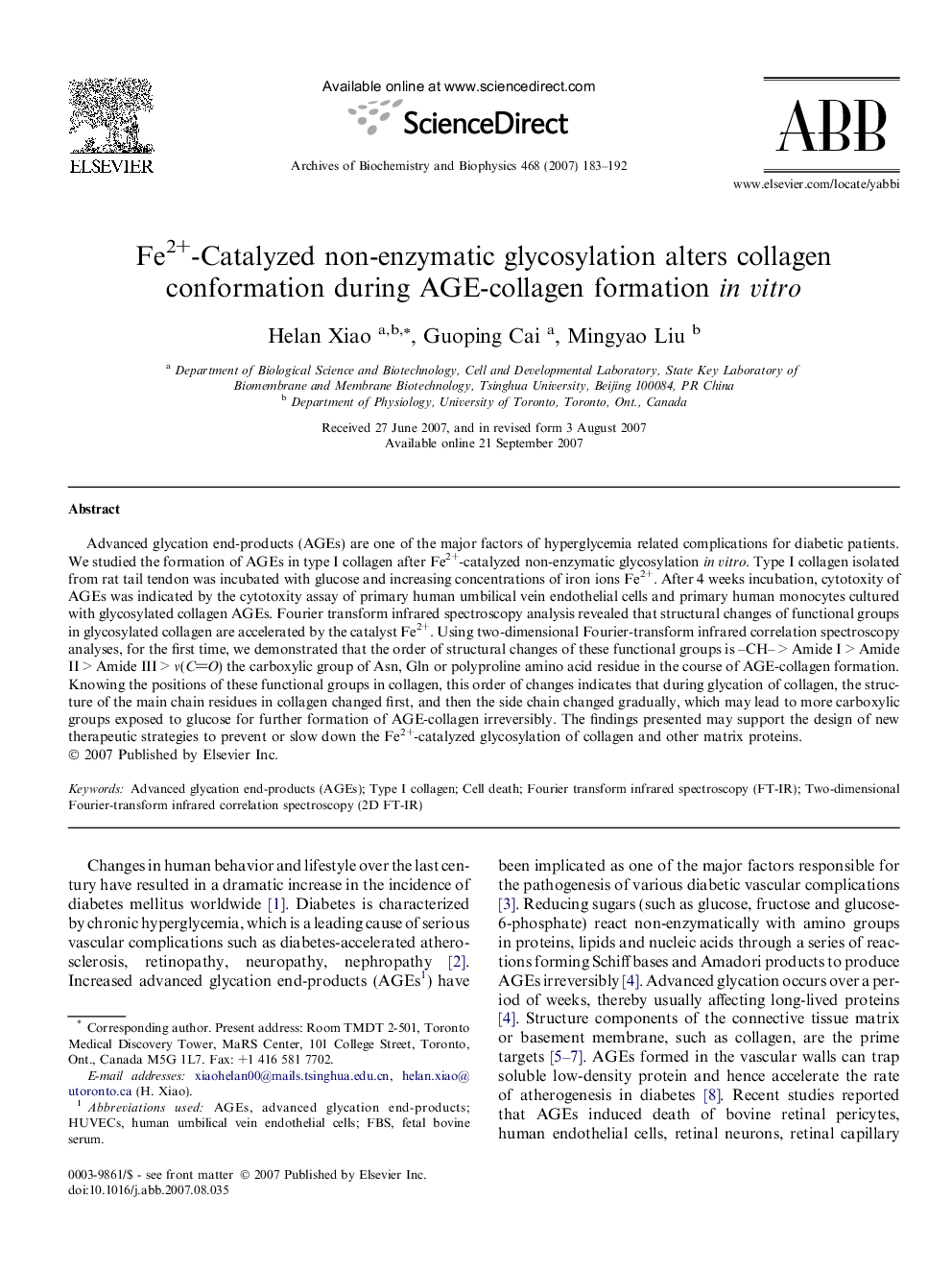| Article ID | Journal | Published Year | Pages | File Type |
|---|---|---|---|---|
| 1926892 | Archives of Biochemistry and Biophysics | 2007 | 10 Pages |
Advanced glycation end-products (AGEs) are one of the major factors of hyperglycemia related complications for diabetic patients. We studied the formation of AGEs in type I collagen after Fe2+-catalyzed non-enzymatic glycosylation in vitro. Type I collagen isolated from rat tail tendon was incubated with glucose and increasing concentrations of iron ions Fe2+. After 4 weeks incubation, cytotoxity of AGEs was indicated by the cytotoxity assay of primary human umbilical vein endothelial cells and primary human monocytes cultured with glycosylated collagen AGEs. Fourier transform infrared spectroscopy analysis revealed that structural changes of functional groups in glycosylated collagen are accelerated by the catalyst Fe2+. Using two-dimensional Fourier-transform infrared correlation spectroscopy analyses, for the first time, we demonstrated that the order of structural changes of these functional groups is –CH– > Amide I > Amide II > Amide III > ν(CO) the carboxylic group of Asn, Gln or polyproline amino acid residue in the course of AGE-collagen formation. Knowing the positions of these functional groups in collagen, this order of changes indicates that during glycation of collagen, the structure of the main chain residues in collagen changed first, and then the side chain changed gradually, which may lead to more carboxylic groups exposed to glucose for further formation of AGE-collagen irreversibly. The findings presented may support the design of new therapeutic strategies to prevent or slow down the Fe2+-catalyzed glycosylation of collagen and other matrix proteins.
